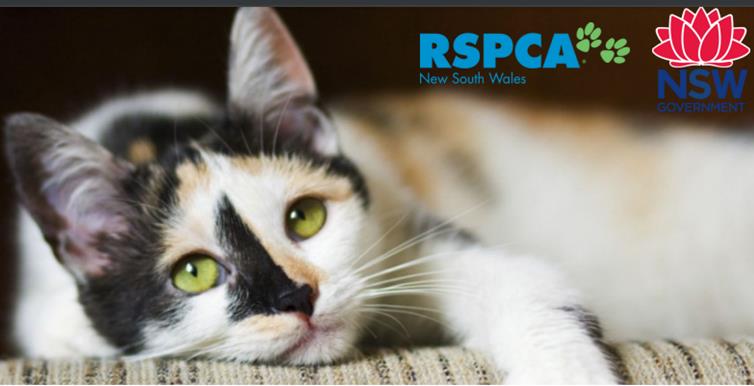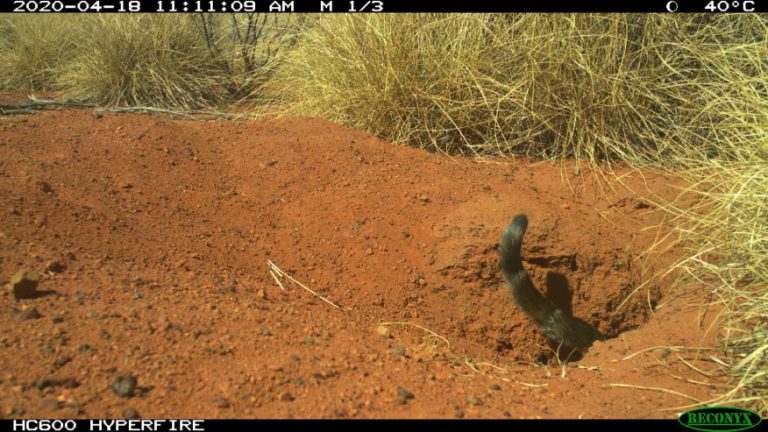Yet another study, to tell us what we already know
While the rest of the country gets on with taking steps to rid our neighbour-hoods of roaming cats, the NSW government is funding another study.
“We would like to share an update of our project Keeping Cats Safe at Home with you,” writes Silvina Tolli, Project Officer – Keeping Cats Safe at Home, March 2, 2022. “We would like to thank you for your participation last year.”
“We also look forward to continuing to work with you in this exciting project during the coming months. If you have any questions or require more information, please get in touch with us.”
The Project, Keeping Cats Safe at Home, is an exciting 4 year education and behaviour change project, says the blurb. The goal is to encourage cat owners to keep their cats happy inside the boundaries of their property to keep them safe and to reduce the impact cats have on wildlife. The project has received $2.5 million from the NSW Government through its Environmental Trust.
Exciting for who? – cat owners who let their pets go on killing missions, wiping out native animals, for another four years? There’s nothing exciting about that if you are a bandicoot, possum, bird, lizard, frog or other small native animal.
The study is limited to 11 local government areas, of which Lake Macquarie is not one – neither is Newcastle. Over four years there will be cameras to track cat movement in bushland, community education, cat owner behaviour information and a schools program.
If the RSPCA and the NSW government were genuine about ‘cat owners keeping their cats happy inside the boundaries of their property to keep them safe and to reduce the impact cats have on wildlife,’ they would know that while about 30 per cent of cat owners do the right thing, around 70 per cent do not take their responsibility seriously. The only positive way to deal with this, back-ed up by scientific studies, is mandate that cats be confined in suitable enclosures, be this within the four walls of a residence or a purpose built cat run outside. The experience in all other states around Australia, tells us this is the only way to ensure the safety of native animals. See the NewsWire story later.
There is no reason to believe that just because a cat resides in NSW it is any less likely to attack native animals if allowed outside. The line on a map distinguishing NSW from Queensland or Victoria for example makes no difference to a cat. We don’t need more studies. We need urgent action to curb the harm inflicted on native animals by cats.
While this delay takes place, it is causing unnecessary stress for wildlife carers. Local government rangers tasked with the job of dealing with roaming cats, adding to the feral cat population, are also witnesses to the horrible toll on native animals. Rangers are unable to issue cat owners with fines unless they catch the offending cat in the act – which more often than not happens in the dead of night, far removed from their ‘parental’ home – therefore making it almost impossible to match up cat with cat parent.
This four year study is all well and good, but out of compassion towards the nature we say we love, the CAA needs amending to allow for councils to bring in curfews and containment rulings. Read the background paper, click here.
MISSING CAT – Name
A MHCS member recently received this notice in their letterbox.
Last seen around – address – date. If you have any information please contact – Name and mobile number. Thank you.
This is exactly what we are dealing with. Is it any wonder, the calls for cat curfews and containment are getting louder by the day.
………………………………………………………………………………..
This is the first in a series taking as the source reports such as: When cats are not so cute, by John Pickrell, (Australian Geographic, Issue 167. March-April, 2022)
Australian wildlife ideal size for cat snack
Cats have had a devastating impact on our native wildlife. The federal government’s Threatened Species Strategy reports that “the scientific evidence is unequivocal that feral cats are one of the greatest threats to Australia’s land-based mammals”.
Since European colonisation, Australia has lost 33 mammal species, including the long-tailed hopping-mouse, crescent nailtail wallaby and desert bandicoot. The nation’s rate of mammal species loss is unprecedented globally and cats are implicated in most of the extinctions. Today, cats continue to threaten a further 120 mammal species.
Genetic studies of feral cats suggest the origins of most can be traced to animals that arrived with early colonists, beginning with the First Fleet in 1788. From Sydney and other settlements they spread out, reaching most of the continent by the 1890s.
“There were few barriers to cat success,” says Charles Darwin University conservation biologist Professor John Woinarski. “Cats are remarkably flexible and efficient hunters, and can inhabit ecosystems from alpine regions to the harshest deserts.”
Most of Australia’s recently extinct and currently threatened mammals fall into the same weight range of 35g to 5.5kg – the ideal snack size for foxes and cats. Studies of the contents of thousands of cats’ stomachs conducted by scientists, including John Woinarski and Professor Sarah Legge at the Australian National University in Canberra, indicate that feral cats today kill more than 2 billion native animals every year.
…………………………………………………………………………..
This story and the graph below demonstrate why we need to get roaming cats off the streets and out of the bush. Feral cat numbers are topped up by domestic cats allowed to roam willy nilly threatening and killing native animals at Munibung Hill.

Cat stats
Modern Australia has a history of accidental and deliberate introductions of species that became feral – biological invaders that can degrade ecosystems, destroy biodiversity and harm societies. Of all these, cats top the list as the most destructive single species, costing billions.
Source: Flinders University SA and the ARC Centre of Excellence for Australian Biodiversity and Heritage led by Professor Corey Bradshaw.
News recently in on the NCA NewsWire, posted by Daniela Pizzirani, March 22. ‘Not hard’: Australians hit with cat curfew following more than a billion wildlife animal deaths.
Some Australians will face up to $1600 fines if their cat is found roaming the streets come June, as councils roll up their sleeves to put an end to native wildlife killings. (More in future issues of MMM)
MMM … Issue 28, April 2022



